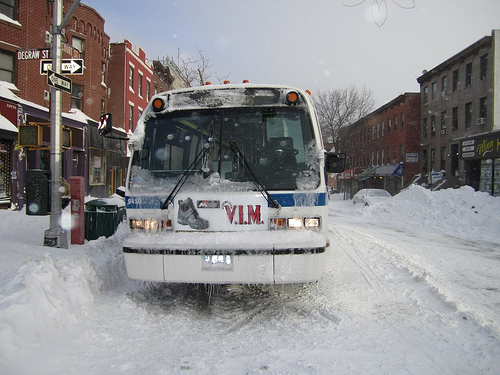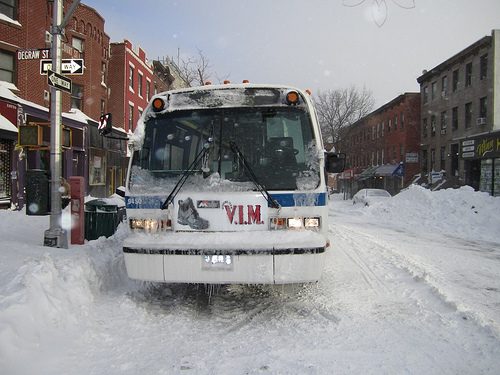 Not going into the office today.Photo: Sarah GoodyearA lot of people I know didn’t have to go to work yesterday. The Blizzard of 2010 — Snowmageddon, Snowpocalypse, Tsnownami, or whatever you want to call it — was a storm that lived up to its hype for once. It shut down much of the New York City subway system and rendered the city’s streets impassable to motor vehicles, including buses. If you couldn’t walk to work, you couldn’t show up. And even walking was tough. (Some intrepid souls did bike.)
Not going into the office today.Photo: Sarah GoodyearA lot of people I know didn’t have to go to work yesterday. The Blizzard of 2010 — Snowmageddon, Snowpocalypse, Tsnownami, or whatever you want to call it — was a storm that lived up to its hype for once. It shut down much of the New York City subway system and rendered the city’s streets impassable to motor vehicles, including buses. If you couldn’t walk to work, you couldn’t show up. And even walking was tough. (Some intrepid souls did bike.)
I, however, had no problem getting to my desk. I just walked downstairs and turned on my computer. No snow day for me. Sigh.
I’m one of between 20 and 30 million Americans who works from home at least one day a week, according to the Telework Research Network. Earlier this month, President Obama signed the Telework Enhancement Act, which will encourage telecommuting for federal employees through a number of measures.
Nicole Belson Goluboff, a lawyer who writes frequently on this topic, has some ideas for how even more could be done to promote working from home, including tax breaks for workers and employees.
One of Goluboff’s most intriguing proposals would require states to promote telework in order to qualify for transportation infrastructure funding. She writes at New Geography:
By reducing the demand for roads and mass transit, telecommuting minimizes the cost of repair, maintenance and expansion of such infrastructure. Before the federal government subsidizes state and local transportation investments, the funding recipients should be compelled to mitigate costs by promoting telework.
In these lean economic times, telework makes a lot of financial sense. The Telework Research Network estimates that if 40 percent of the American work force worked from home half the time, it could save the country’s businesses $700 billion annually — and result in a 50 million ton reduction in greenhouse gas emissions. It could mean 1,500 fewer traffic deaths each year.
Telework also increases the resiliency of a city — which will be crucial in a future of diminishing resources and climate change.
All of which seems terribly relevant in New York this week, where a lot of questions are being raised about just why this storm has resulted in such paralysis (including several subway trains stranded for hours and lines of city buses stuck in the street). After all, this is a city that gets its fair share of snow. We had a bigger storm back in 2006. But the streets this time are the worst I’ve ever seen them.
Budget cuts may be to blame, at least in part. As Alison Kilkenny of Citizen Radio points out on her blog, Unreported, New York’s sanitation department — which is responsible for clearing the city’s streets in a storm — is down by some 400 workers from last year’s staffing levels:
Pre-cuts, NYC was able to handle a larger storm in a relatively smooth fashion. Post-cuts, it’s snowpocalypse. I walked a single city block this morning and saw an abandoned bus in the middle of a major Brooklyn intersection, and the intersection was nearly impassable for pedestrians. And it’s been more than 24 hours since the storm hit. That’s very unusual for New York City. The sanitation workers (when there are enough of them) are very good about digging us out in a quick fashion. Not this time. That should serve as a warning flare.
You can’t plow a city’s streets by telecommuting. But plenty of people can get their jobs done from home — even if they are wearing pajamas while they work.
(Thanks to Aaron Renn at The Urbanophile.)




